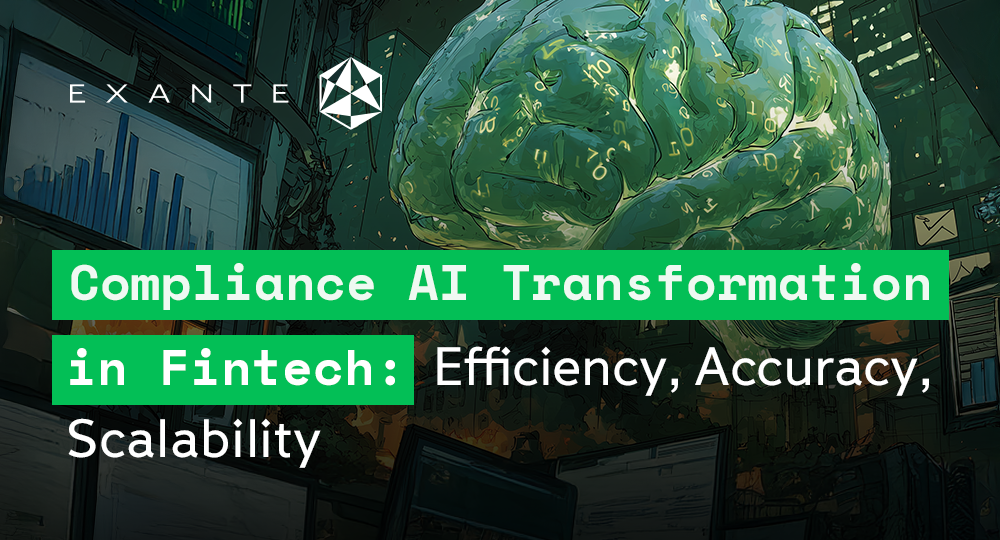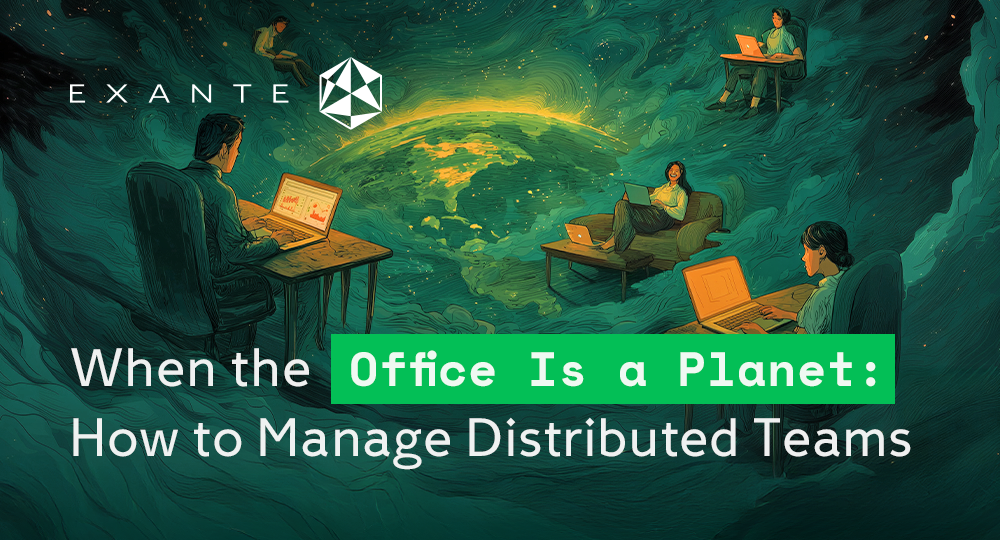As fintech continues to surge, compliance remains both a vital priority and a tough nut to crack. With continuous innovation and expanding digital capabilities, fintech companies face intense regulatory scrutiny. Compliance isn’t just a formality, but it’s a foundation for sustainable growth and market trust.
Why Compliance Matters
There are three core reasons compliance is mission-critical for fintechs:
1. Staying on the right side of the regulation
Fintech firms operate under an ever-evolving web of rules: from AML and KYC to GDPR and cross-border financial laws. Falling out of compliance isn’t just risky – it’s existential. Penalties range from massive fines to revoked licences, legal action, and even criminal charges. Simply put: no compliance, no business.
2. Combating financial crime
Compliance frameworks are designed to prevent illicit activities such as fraud, money laundering, and terrorist financing. By embedding strong controls, fintechs protect their operations and clients and avoid cascading legal and reputational fallout.
3. Earning and keeping trust
In finance, trust is everything. Clients and regulators alike expect transparency, security, and fairness. A strong compliance culture reinforces ethical behaviour, safeguards data, and builds a brand that’s resilient under scrutiny. In regulated sectors, trust isn’t given – it’s earned through consistent, verifiable compliance.
The Pain Points of Traditional Compliance
Even in tech-driven companies, many compliance processes are stuck in the past. Common challenges include:
- Manual processes. Too many fintechs still rely on human checks for documents and approvals. It’s slow, costly, and error-prone.
- Slow onboarding. Manual KYC and AML checks slow down onboarding, frustrating users and creating drop-off risk in competitive markets.
- Keeping up with change. Regulations evolve constantly. Smaller firms often struggle to hire and retain the specialists needed to stay compliant, increasing their exposure to violations.
Enter AI: Compliance Gets Smarter
The way forward isn’t more paperwork – it’s smarter automation. AI is transforming how fintechs handle compliance, helping teams manage risk, meet regulatory expectations, and scale operations without scaling costs.
Let’s break down the core ways AI is reinventing compliance workflows:
Natural Language Processing (NLP): Supercharging Document Review
Document-heavy processes such as reviewing contracts, customer files, and regulatory texts are slow and prone to oversight. NLP changes the game.
The NLP tools can instantly scan and interpret huge volumes of text, extract key data, flag risky language, and benchmark content against regulatory standards and all that in real time. Instead of manually verifying a client’s ownership structure, NLP surfaces the relevant details, explains their context, and raises red flags automatically.
What’s the outcome? Faster reviews, fewer errors, and better decisions.
Agentic AI: Smarter, Autonomous Onboarding
KYC and AML onboarding can be a time sink, especially for entities with complex profiles. Agentic AI introduces a new layer of intelligence. Unlike static automation, it operates autonomously within set parameters, guiding users through onboarding flows, running background checks, requesting missing info, and even making real-time decisions.
It’s not just automation – it’s orchestration. While human oversight remains essential for final calls, Agentic AI handles the heavy lifting with speed and precision.
Robotic Process Automation (RPA): Killing Repetition with Code
Compliance teams are buried under repetitive tasks: checking sanction lists, updating reports, and copying data between systems. RPA bots take this off their plates.
These bots run around the clock, log every action for audit trails, and slash the chance of human error. That frees up compliance professionals to focus on high-risk investigations and strategic planning, not spreadsheet wrangling.
AI Isn’t Replacing Compliance Teams – It’s Empowering Them
By taking over the routine, AI enables teams to become more proactive and strategic. It allows for a compliance function that isn’t just reactive, but predictive and resilient, built for scale in a fast-moving world.
The Payoff: Benefits of AI-Powered Compliance
In a market where speed, accuracy, and adaptability are crucial, AI-powered compliance delivers measurable results:
1. Faster KYC and AML
AI accelerates identity checks, document validation, and background analysis, reducing onboarding from days to minutes. It boosts throughput without sacrificing rigour.
2. Smarter anomaly detection
AI spots suspicious activity by learning what ‘normal’ looks like and catching deviations. Unlike static rules, machine learning adapts, helping teams detect new types of fraud faster and with more confidence.
3. Scaling without ballooning costs
AI lets you do more without hiring massive teams. Document review, transaction monitoring, and reporting become lean, automated, and consistent, unlocking serious efficiency gains.
4. Adapting on the fly
Regulations don’t wait. AI-driven systems can be updated quickly to reflect new laws or policy shifts, helping firms stay compliant across jurisdictions without skipping a beat.
By making compliance faster, smarter, and more scalable, AI turns a cost centre into a competitive advantage.
What to Watch: Challenges and Considerations
AI brings serious upside, but implementation isn’t plug-and-play. Getting it right requires thoughtful design, solid governance, and a commitment to transparency.
Here’s what compliance leaders need to consider:
GDPR and the EU AI Act
In the EU, compliance with the GDPR and AI Act is non-negotiable. That means AI systems must be explainable, traceable, and subject to human oversight, especially when they influence access decisions or risk ratings.
Black-box algorithms won’t fly. Every model must be accountable.
Regulatory scrutiny is increasing
Financial watchdogs are watching AI adoption closely. Firms need to demonstrate that their AI tools reinforce, not weaken, their compliance posture. That includes documentation, validation, and readiness to respond to regulatory inquiries at any time.
Proactive communication with regulators is key. This isn’t just tech adoption – it’s a shift in governance.
Bias and fairness
AI models can absorb and amplify bias from historical data, leading to unfair or discriminatory outcomes. This is especially dangerous in client onboarding, credit risk, and fraud detection.
What would be the fix for this? Build in fairness checks, run regular audits, and maintain human-in-the-loop reviews for high-impact decisions. Ethics can’t be an afterthought.
What’s Next: The Future of AI in Fintech Compliance
AI is no longer a futuristic concept – it’s shaping compliance today. But what’s coming next?
Agentic AI in corporate onboarding
So far, AI has improved individual onboarding. But enterprise onboarding, with its layers of documentation and risk, is the next challenge. Agentic AI can autonomously guide complex workflows, resolve exceptions, and reduce human escalations.
Real-time compliance dashboards
Static compliance reports are fading fast. AI-powered dashboards bring live, actionable insights, combining transactional, behavioural, and regulatory data into a single view. This enables compliance teams to move from reactive firefighting to proactive risk control.
AI-driven regulatory intelligence
Regulations change constantly. Instead of reacting, AI tools can monitor legal updates and enforcement trends, helping firms adjust policies and controls before issues arise. That’s game-changing for firms with global footprints.
Humans still matter
Despite all the tech, human oversight remains essential. AI can make recommendations, but people must decide. Context, ethics, and risk judgment require human input.
The most effective compliance models will blend machine efficiency with human responsibility, building systems that are intelligent, ethical, and resilient.
Conclusion
If your compliance setup still runs like it’s 2015, now’s the time to modernise. AI isn’t just another tool; it’s a strategic shift. The winning fintechs will be those that harness AI not only to stay compliant but to lead with confidence, agility, and trust. The future of compliance is smart, scalable, and deeply human at its core.
How is your organization approaching the future of compliance? Are you already leveraging AI in your workflows, or are you still navigating the transition?
Share your challenges, success stories, or innovations in fintech compliance.
Continue the journey - find more on Medium >>
Research Sources & Approach
This article draws on insights from a range of industry sources, including AI in compliance whitepapers, fintech regulatory reports from the FCA and ESMA, guidance from the EU AI Act and GDPR frameworks, and thought leadership from providers like ComplyAdvantage, Sumsub, and Deloitte.
- Financial Conduct Authority (FCA). “Guidance on Financial Crime Systems and Controls” https://www.fca.org.uk
- European Banking Authority (EBA). “Guidelines on ML/TF Risk Factors” https://www.eba.europa.eu
- Deloitte. “AI and Compliance: Reimagining Risk and Regulation” https://www2.deloitte.com
- World Economic Forum. “Transforming Paradigms: A Global AI in Financial Services Survey” https://www3.weforum.org
- McKinsey & Company. “The Future of Compliance: AI, Automation, and Smart Risk Management” https://www.mckinsey.com
- PwC. “AI in AML: Unlocking Efficiency Through Technology” https://www.pwc.com/gx/en/financial-services/fs-analytics/assets/ai-in-aml.pdf
- Cambridge Centre for Alternative Finance. “Global AI in Financial Services Survey” (Agentic & Autonomous systems) https://www.jbs.cam.ac.uk
- EU Commission. “EU AI Act Proposal” (2021) https://digital-strategy.ec.europa.eu/en/policies/european-approach-artificial-intelligence
- ICO (UK). “Explaining Decisions Made with AI” https://ico.org.uk/for-organisations/guide-to-data-protection/key-areas-of-guidance/explaining-decisions-made-with-ai/
FATF. “Opportunities and Challenges of New Technologies for AML/CFT” https://www.fatf-gafi.org/media/fatf/documents/reports/opportunities-challenges-new-technologies-aml-cft.pdf
This article is provided to you for informational purposes only and should not be regarded as an offer or solicitation of an offer to buy or sell any investments or related services that may be referenced here. Trading financial instruments involves significant risk of loss and may not be suitable for all investors. Past performance is not a reliable indicator of future performance.






